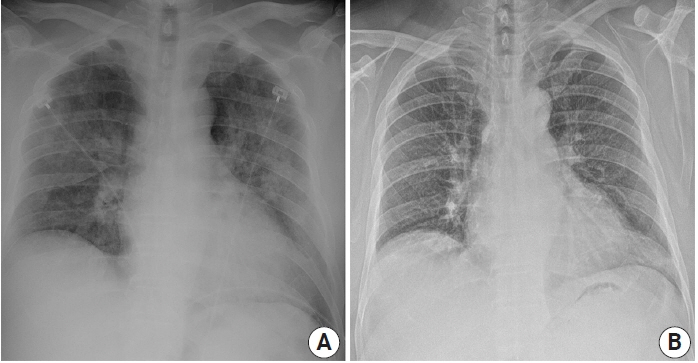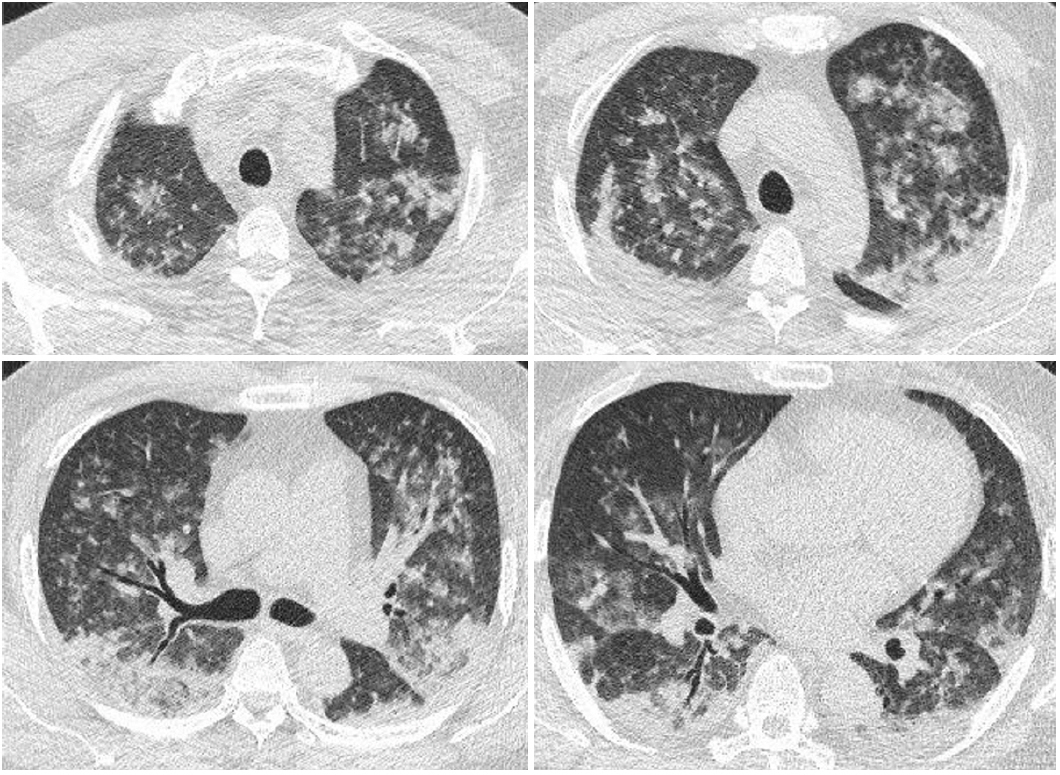Acute Crit Care.
2021 Nov;36(4):395-396. 10.4266/acc.2021.01557.
Acute lung injury following occupational exposure to nitric acid
- Affiliations
-
- 1Department of Critical Care Medicine, Department of Medicine, Samsung Medical Center, Sungkyunkwan University School of Medicine, Seoul, Korea
- 2Department of Emergency Medicine, Department of Medicine, Samsung Medical Center, Sungkyunkwan University School of Medicine, Seoul, Korea
- 3Department of Medicine, Department of Medicine, Samsung Medical Center, Sungkyunkwan University School of Medicine, Seoul, Korea
- 4Division of Pulmonary and Critical Care Medicine, Department of Medicine, Samsung Medical Center, Sungkyunkwan University School of Medicine, Seoul, Korea
- KMID: 2524325
- DOI: http://doi.org/10.4266/acc.2021.01557
Figure
Reference
-
1. Persinger RL, Poynter ME, Ckless K, Janssen-Heininger YM. Molecular mechanisms of nitrogen dioxide induced epithelial injury in the lung. Mol Cell Biochem. 2002; 234-235:71–80.
Article2. Hajela R, Janigan DT, Landrigan PL, Boudreau SF, Sebastian S. Fatal pulmonary edema due to nitric acid fume inhalation in three pulp-mill workers. Chest. 1990; 97:487–9.
Article3. Kao SL, Yap ES, Khoo SM, Lim TK, Mukhopadhyay A, Teo ST. Acute lung injury after inhalation of nitric acid. Eur J Emerg Med. 2008; 15:348–50.
Article
- Full Text Links
- Actions
-
Cited
- CITED
-
- Close
- Share
- Similar articles
-
- A case of chemical pneumonitis after occupational nitric acid inhalation
- Acute Chemical Pneumonitis Caused by Nitric Acid Inhalation: Case Report
- The role of nitric oxide in acute lung injury
- Inducible nitric oxide synthase mRNA expression and nitric oxide production in silica-induced acute inflammatory lung injury
- A Case of Chemical Pneumonitis Caused by Nitric Acid Fume Inhalation



